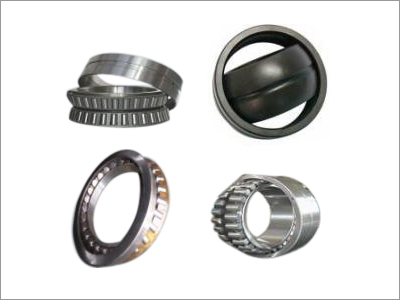
Product Description
Bearing is a device to permit constrained relative motion between two parts, typically rotation or linear movement. Bearings may be classified broadly according to the motions they allow and according to their principle of operation as well as by the directions of applied loads they can handle.
There are at least six common principles of operation:
SLIDING BEARINGS , usually called BUSHES , BUSHING , JOURNAL BEARINGS , SLEEVE BEARINGS, RIFLE BEARINGS, or PLAIN BEARINGS .
ROLLING-ELEMENT BEARINGS such as ball bearings and roller bearings
JEWEL BEARINGS in which the load is carried by rolling the axle slightly off-center
FLUID BEARINGS in which the load is carried by a gas or liquid
MAGNETIC BEARINGS , in which the load is carried by a MAGNETIC FIELD
FLEXURE BEARINGS in which the motion is supported by a load element which bends.
SOME TIMES BEARING FAILURE WHY ?
Rolling-elemint bearing often work well in non-ideal condition , but some times minor problem cause bearing to fail qqqquickly qand mysteriously . For example , with a stationary (non- rotating) load , small vibrationas can gradually press out the lubricant between the race and roller or balls (false brinelling) . With out lubricant the bearing fails even through it is not rotating and thus is apparently not being used . For these sorts of reasons, much of bearing design is about failure analysis .
There are three usual limits to the life time or load capacity of a bearing : abrasion, fatigue and pressure -induced welding. Abrasion is when the surface is eroded by hard contaminants scarping at the bearing material. Fatigue is when a material breaks after it is repeatedly loaded and released . where the ball or roller touches the race there is always some deformation, and hence a risk fatigue. Smaller ball or rollers deform more sharply , and so tend to fatigue faster . Pressure-induced welding is when two metal pieces are pressed together at very high pressure and they become one. Although balls , rollers and races may look smooth, they are microscopically rough . Thus, there are high pressure spots which push away the bearing lubricant .
Sometimes , the resulting metal-to-metal contact weld a microscopic part of the ball or roller to the race . As the bearing continues to rotate , the weld is then iron apart . but its may leave race welded to bearing or bearing welded to race .
Although there are many other apparent causes of bearing failure , most can be reduced of these three .For example , a bearing which is run dry of lubricant fails not because it is "with out lubricant", but because lack of lubrication leads to fatigue and welding , and the resulting wear debris can cause abrasion. Similar events occur in false brinelling damage . In high speed applications , the oil flow also reduce the bearing metal temperature by convections .The oil becomes the heat sink for the friction losses generated by the bearing .
Other Products in 'Bearings' category
|
|
|
|
 |
A.D INTERNATIONAL
All Rights Reserved.(Terms of Use) Developed and Managed by Infocom Network Private Limited. |




